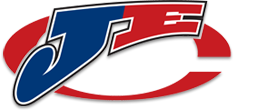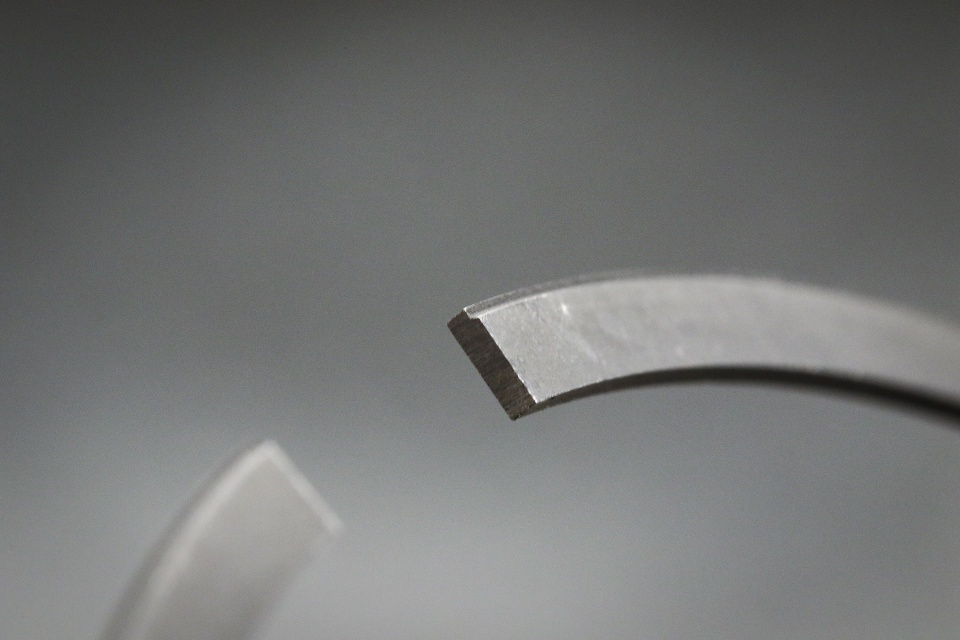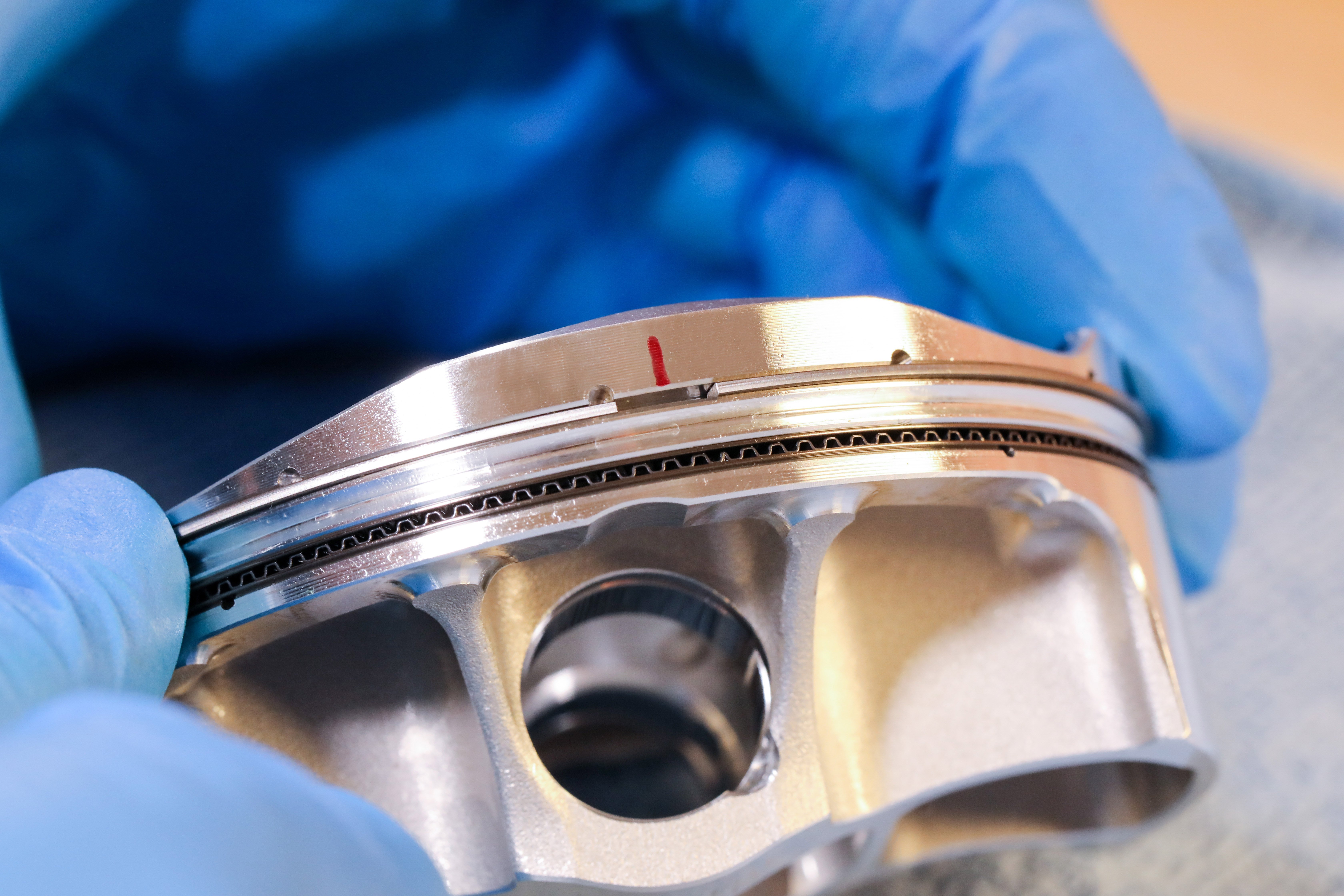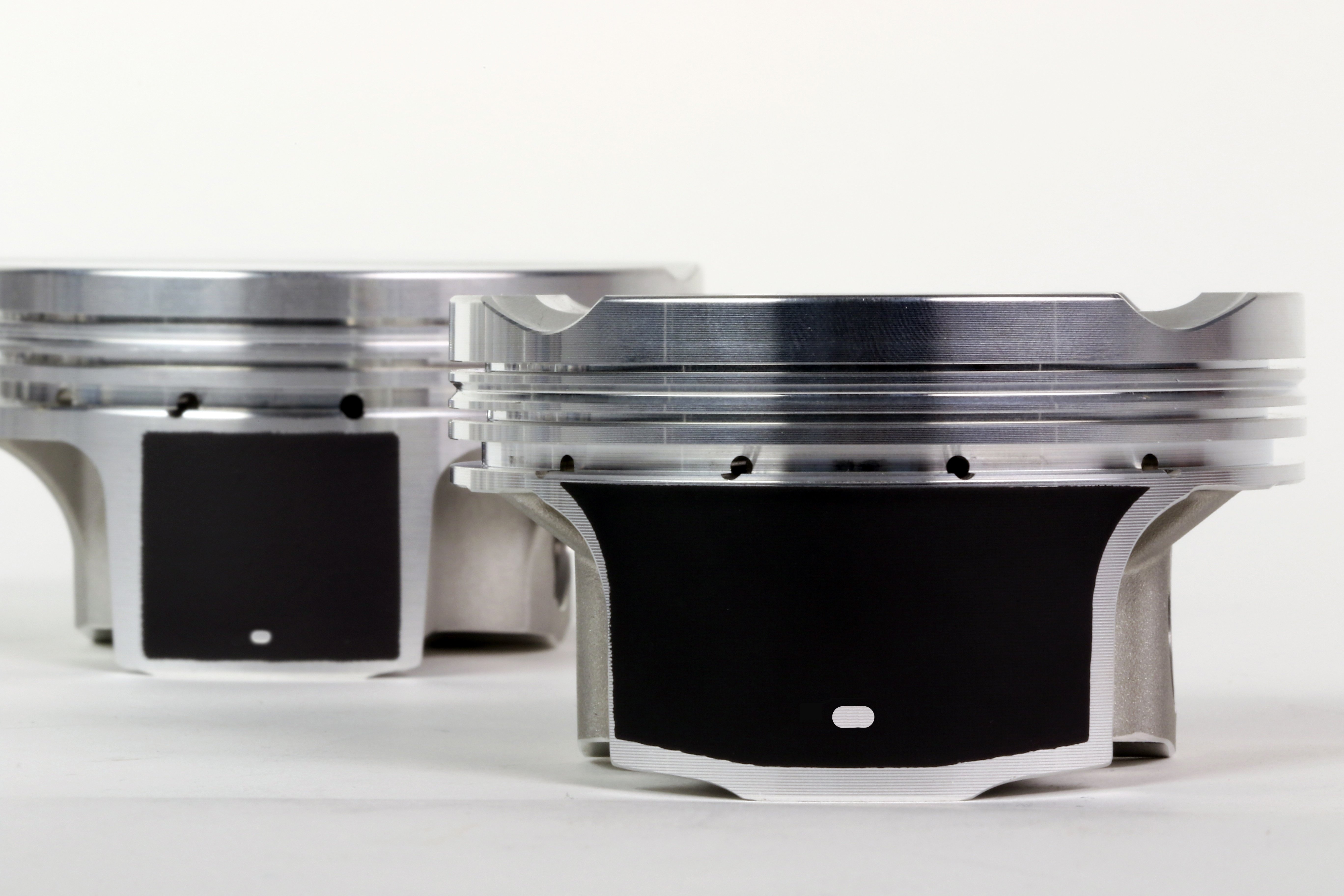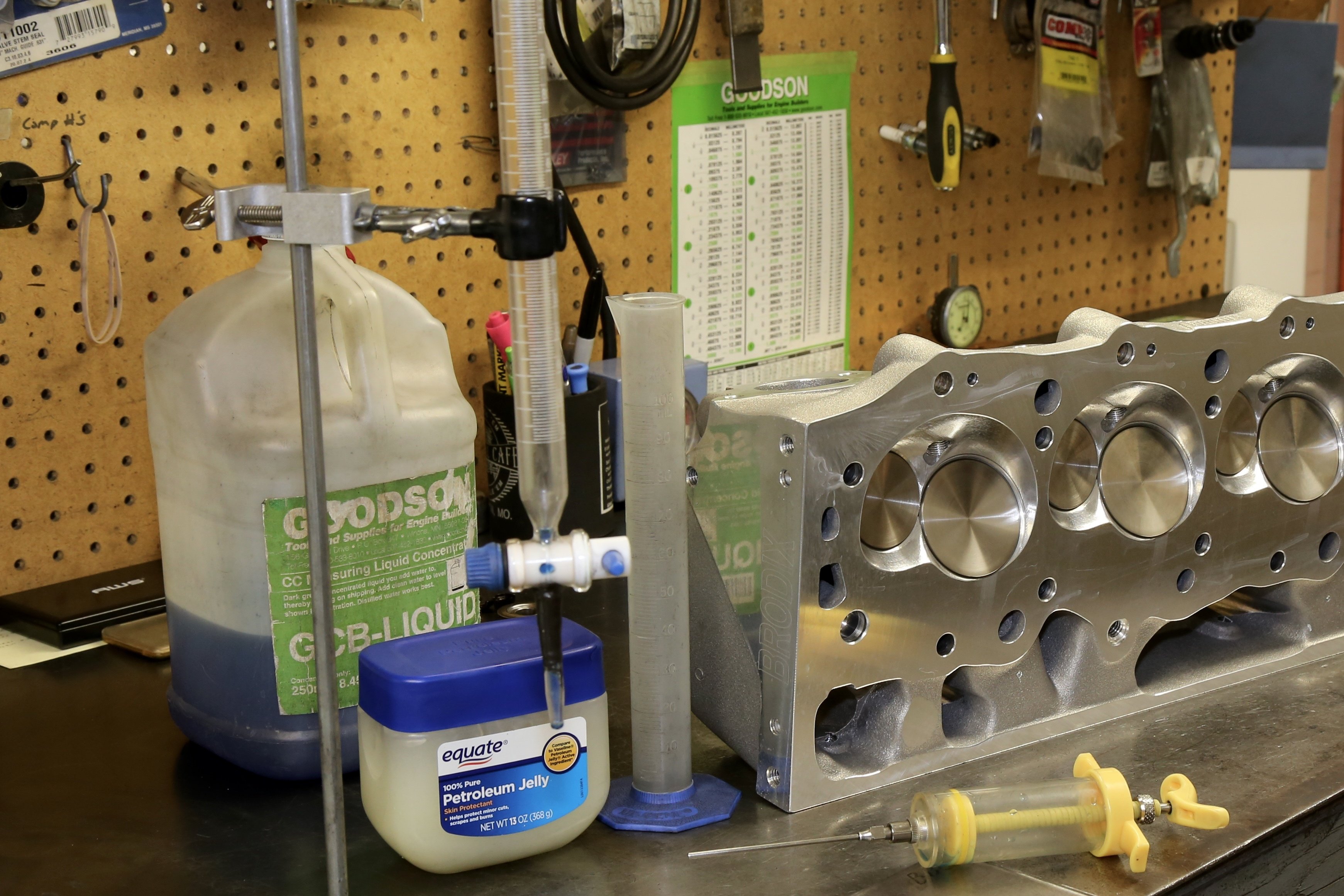Rings are rings right? Wrong! In addition to thickness and diameter, there are several different ring materials, styles, and coatings available to maximize performance in a variety of engine environments.
Not all that long ago, piston rings were all the same. They were heavy, thick, and you could have any material you wanted – as long as it was cast iron. Today, the performance engine builder has a broad span of material choices when it comes to piston ring materials and finishes. This is a direct result of the push for stronger ring materials faced with surviving the harsh environment of higher cylinder temperatures and pressures.
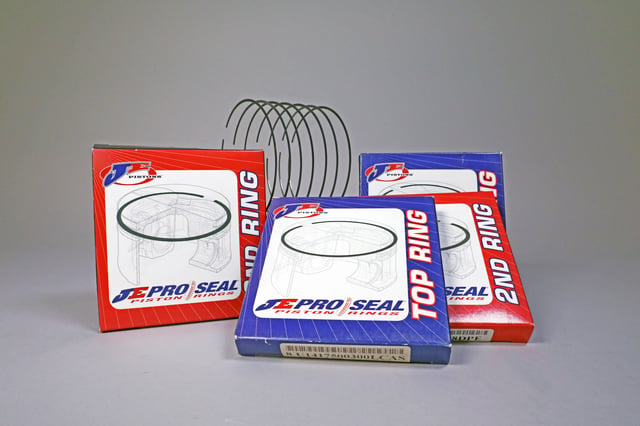
Before we delve into materials, the responsibilities of a piston ring must be reviewed. While sealing combustion pressure is the obvious goal, an equally important function is to transfer heat from the piston to the cylinder wall. As rings become thinner, this heat transfer function becomes even more critical. Third, the rings must minimize the amount of oil that enters the combustion space. While many enthusiasts think that the second ring’s main task is a backup to sealing cylinder pressure, the reality is that 80 percent of its intended function is oil control to sweep up the remaining oil from the cylinder wall not removed by the oil ring.
For a performance engine, the piston buyer is faced not only with choosing the proper piston configuration and compression ratio, but also with selecting an optimized ring package. Much of this selection process is dictated by how the engine will be used. This must begin with the selection of the proper ring material. Ring widths and design can be chosen once the material has been finalized.
 Ring grinding and lapping helps create a custom ring height and can allow fine tuning of the rings radial tension (the force it exerts against the cylinder wall). It can also help to create an extremely smooth, flat surface which helps ring sealing.
Ring grinding and lapping helps create a custom ring height and can allow fine tuning of the rings radial tension (the force it exerts against the cylinder wall). It can also help to create an extremely smooth, flat surface which helps ring sealing.The current JE piston catalog lists a multitude of ring materials which may appear at first to be a daunting challenge. The first is carbon steel, which is a much more malleable material than cast iron, is able to handle higher temperatures without losing temper, and is better able to withstand bouts with detonation. Cast iron, by nature is very brittle and therefore not as strong as gas-hardened forged steel. Gas nitride top rings perform so well in so many different applications that even the OE now spends the extra money for this ring material for production engines.
While this sounds like a generic use material, carbon steel is also a great selection for high cylinder pressure applications like nitrous, turbo, supercharged, and high-rpm engines.
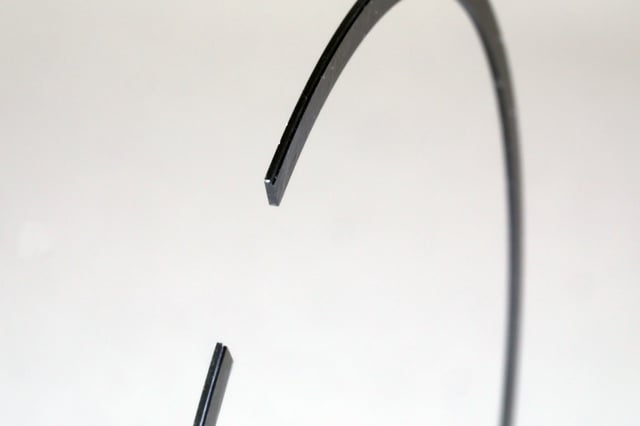
Chrome faced rings were a popular option a few years back, but now have also succumbed to progress and are rarely employed in modern performance engines. The problem with many chrome facings was that they were extremely hard and difficult to break in properly and often suffered from flaking or cracking when exposed to detonation. Most dirt circle track applications have now converted to steel nitride ring packages. Some steel nitride rings are offered with a plasma molybdenum coating in addition to gas nitride.
Steel nitride top rings are a great choice for street performance applications, but may not be necessary from a cost standpoint for every engine. JE offers other options for the cost-conscientious engine builder. Hardened ductile iron is a great choice for serious street engines that do not demand the high temperature tolerance compatibility of a race engine. Ductile iron is a step up from typical cast iron with magnesium added to the grey cast iron to improve ductility –making this material more apt to bend instead of break.
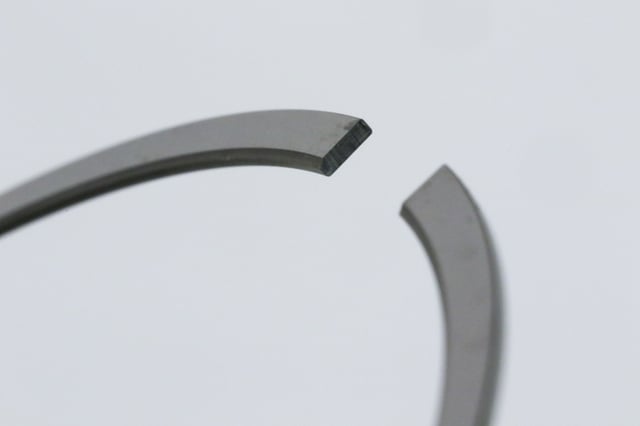
Some engine builders prefer a slightly older technology that they’ve had success with in the past including carbon steel rings with a harder chrome face (listed in the catalog as JC and JXC Series rings). This process is compatible with all cylinder bore materials except Nikasil.
Ductile iron is roughly twice the tensile strength of grey iron and tends to bend instead of breaking when subjected to stress. This makes it a great top ring selection when price is a consideration. Most often, ductile iron rings are offered with a plasma molybdenum (moly) face coating to make them more compatible with iron cylinders.
JE’s Premium Race Series is a great example of a ductile iron top ring that uses the more modern plasma-moly inlay technology. The plasma moly application produces a somewhat porous yet extremely hard, wear-resistant surface that retains oil and improves lubrication while also reducing friction. The plasma is created by spraying an alloyed powder containing Chromium, Molybdenum, and Nickel along with other trace elements into a small channel in the ring’s face. Using extreme heat, this powdered metal turns into a molten spray that offers superior adhesion characteristics which reduce the potential for flaking. This added porosity also improves initial ring break-in, reducing the time it takes for the rings to optimize sealing.
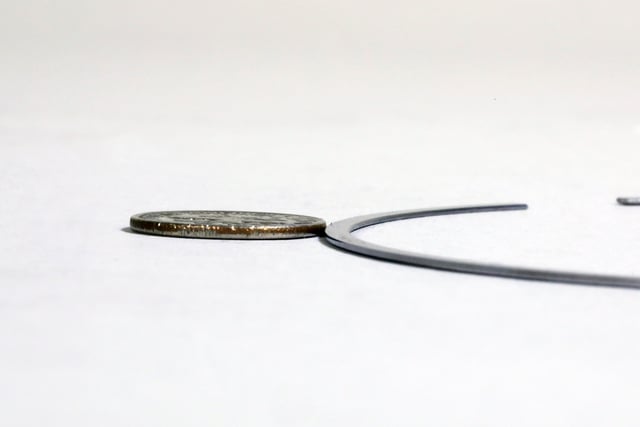
The discussion up to now has focused on the top ring. The second ring is subjected to far less heat and pressure than its top-rung brother and therefore does not demand as expensive a material. As an example, the Plasma Moly ring package listed in the JE ring chart is an excellent ring package specifying a carbon steel nitride top ring with a ductile iron second. A less expensive version of that combination would be the Sportsman Series ring package that specs a plasma-sprayed ductile iron top ring combined with a grey iron second ring.
Oil ring packages tend to be less cumbersome in terms of materials with most options offering carbon steel for the two sealing rings. The expander design may change but the most important question for oil rings is establishing overall tension based on how the engine will be deployed.
Once you’ve made your ring material selections, you can move on to the next level of decision making in terms of top and second ring design, face styles, radial thickness and perhaps any special treatments such as lapping and/or ultra or critical finish steps. This entire process is all aimed at optimizing ring seal and capturing all the cylinder pressure within the combustion space where it can do the most good.
